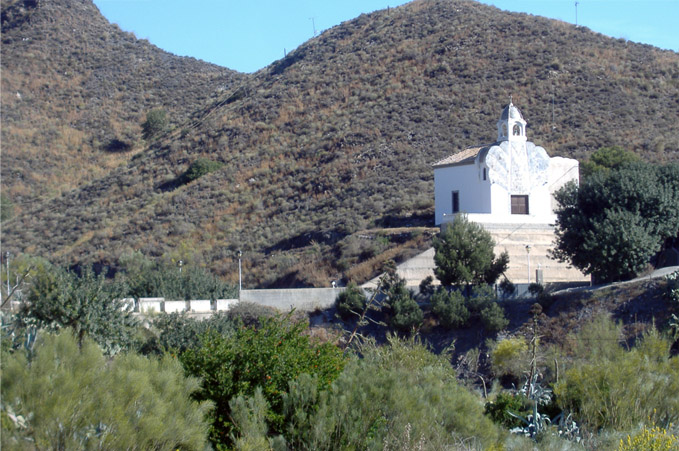Santa María Parish Church:
The church was built at the end of the 16th Century (1560), over the remains of an earlier mosque, the works initiated by the stonemason Sebatian Segura. Converted to Christian use following the Reconquest, the building served both as a religious centre and as a defensive fortress. Standing out is the simplicity of its interior, which houses a beautiful and significant 1980s fresco, a work by a german artist, Michael Sucker. He was born in 1951 and he lived 9 years in Mojácar. Its small collection of religious images includes those of San Agustín and Nuestra Señora del Rosario, the village´s two patron saints.
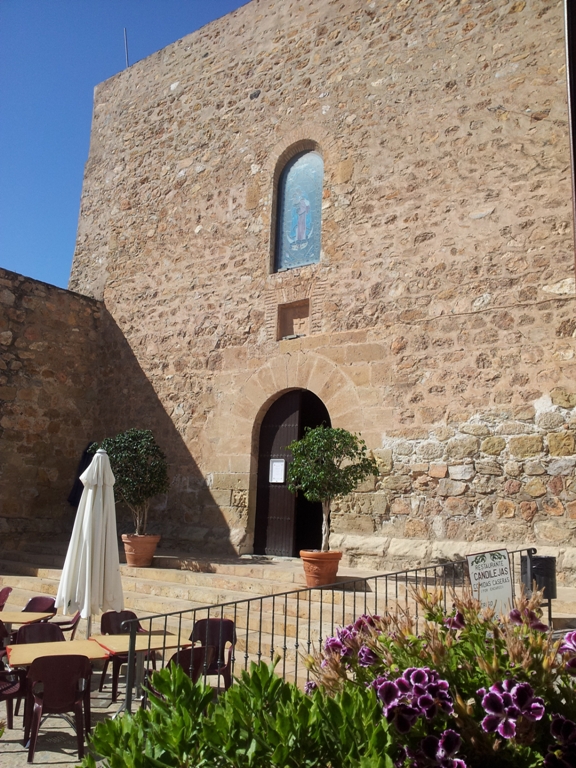
Statue of Mojaquera:
The statue of "La Mojaquera" (Mojácar woman) has stood in front of the Church since 1989. Sculpted in marble and dressed in the typical attire, she holds the Arab scarf with her teeth and carries the water vessel that was used to carry the precious liquid from the fountain.
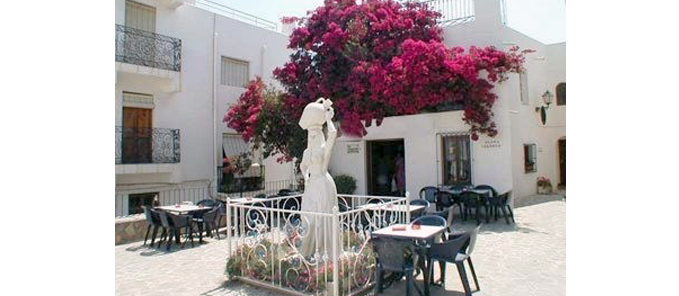
Plaza del Parterre:
Bordering the church we find a set of stone steps which descend to the Plaza del Parterre, the old Arab necropolis where the tombs look towards Mecca. We then arrive at Calle Enmedio, which follows the old wall that surrounded the upper part of the citadel. Located in a pretty corner of this Plaza is a faithful reproduction of one of the scenes of the Reconquest, which is recreated in the Toledo Cathedral´s choir. This fired clay reproduction is the work of the artist Itziar Ortuzar.
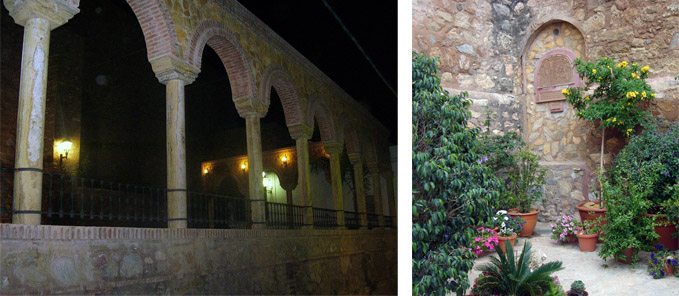
Mirador de la Plaza Nueva:
This Plaza is undoubtedly the centre of life in Mojácar. Full of atmosphere and life, it is the ideal spot to begin our visit, or to simply sit or to watch the sun go down. From this viewpoint we get a magnificent Panorama of the "Valley of the Pyramids" and we gaze at the vast space which enclose the Cabrera and Almagrera Sierras. We can also make out the neighbouring towns of Turre, Los Gallardos, Bédar, Vera, Garrucha, and of course, Mojácar´s market gardens. The viewpoint was renovated in 1960.
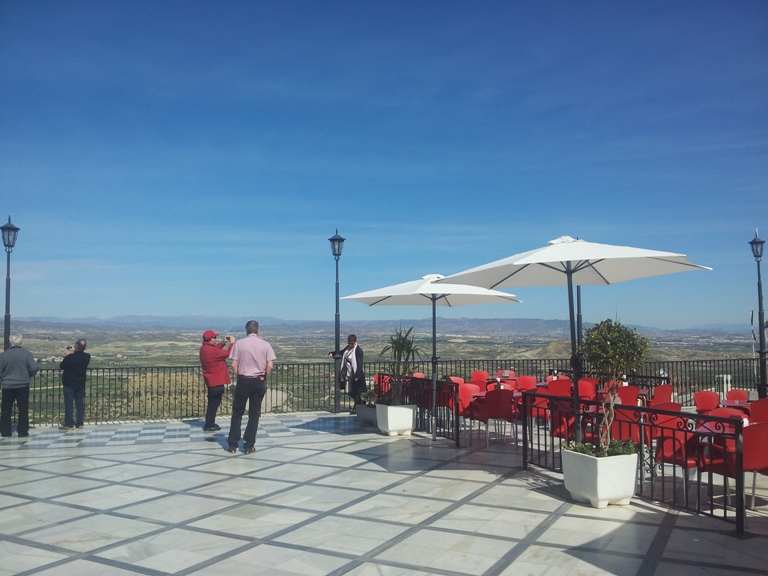
The Plaza is also the site of the privately-owned 16th century Nuestra Señora de los Dolores hermitage, built over the Arab mosque.
Town Hall Square:
Here we find a giant, old tree, Ficus Benjamin, brought by an inmigrant from America. On the floor there is an Indalo mosaic and on the wall of the building the Mojácarshield (A two- headed Austrian household eagle, a prize awarded to the village for its loyalty in the battle of the Alpujarra) with the leyend: "To the very noble and loyal city of Mojácar, key and protector of the Kingdom of Granada".
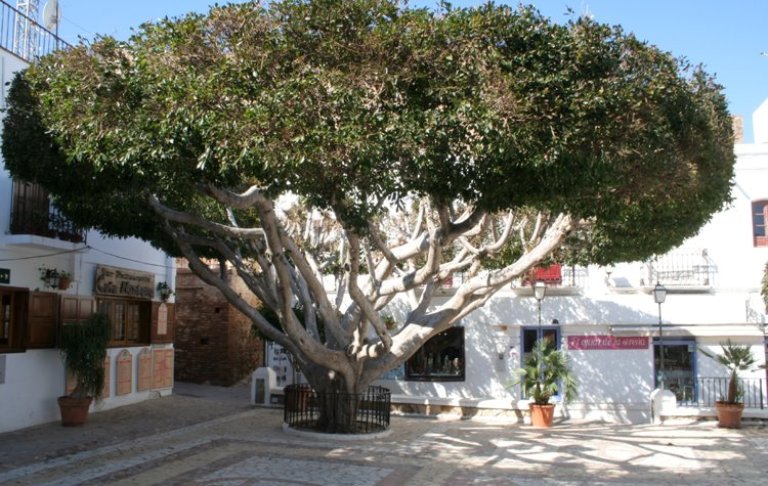
City Gate:
The inscription reads "Puerta de la Almedina" (City Gate). This is a typical half point arch dating from 1574 which bears the shield of Mojácar. This gate served as the entrance of the village until the construction of the new access. The market used to be held here, taking advantage of its connection to the Plaza del Caño. his gate gives on to the Arrabal.
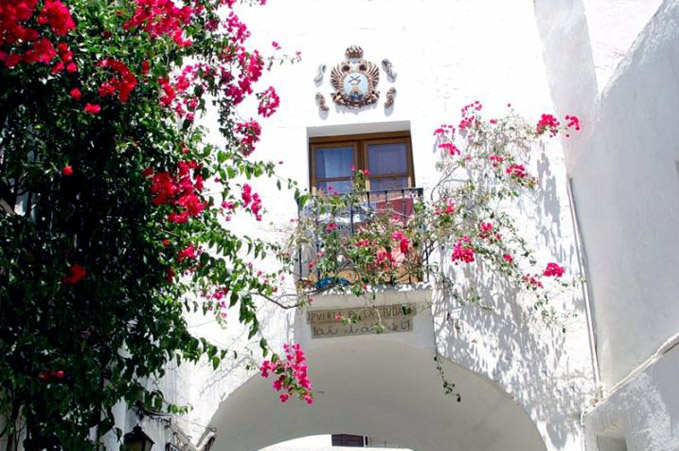
Casa del Torreón:
This is the old toll house where the gate taxes used to collected. Its present form the 18th century and it now houses a charming pensión. Its elegant architecture, adorned with flowers and boungainvillea, makes it a picturesque spot.
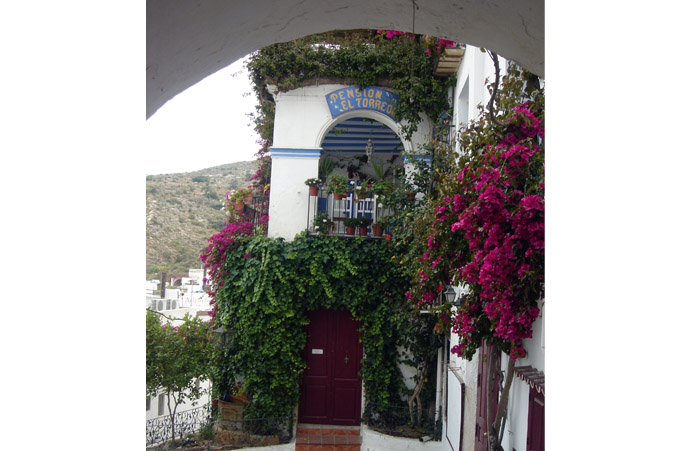
Arrabal:
This beautiful area of winding narrow streets used to be city´s Jewish Quarter. It began to be built outside the village walls in the 17th century. A stroll around it is a must for visitors who really want to capture the full flavour of the village.
Mirador del Castillo:
The spectacular views of the sea from this point are well worth the walk up. The site was once a watchtower and fortress, even after the 1518 earthquake demolished its walls.
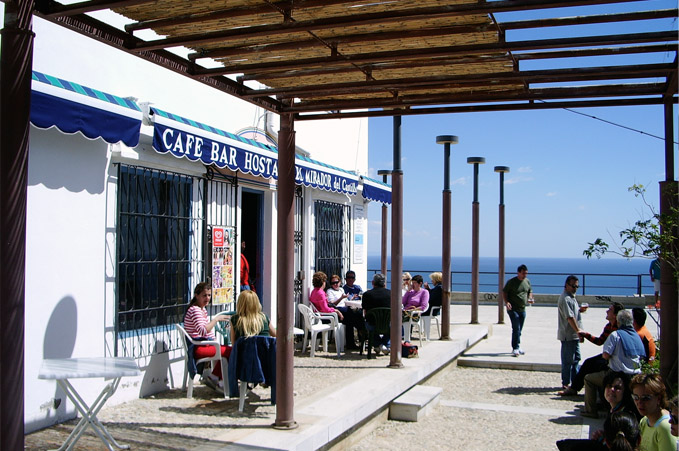
The Public Fountain:
The crystalline waters which gush from its twelve spouts have irrigated vegetable plots and supplied the vvillage with both drinking water and water for washing clothes; in Mojácar the latter had its own particularity, the women washing the clothes with their feet in the water. Mentioned in old Arab texts, Mojácar´s public fountain was of vital importance when to found the village and centuries was, out of necessity, a meeting place.
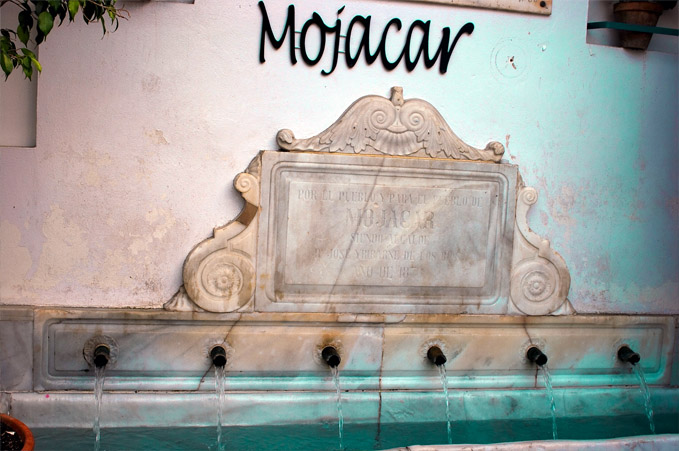
Statue of Mojaquera:
Located in the Plaza Rey Alabez, next to the parking area, it is a bronze sculpture, symbolizing the woman changing their shoes when entering and leaving the village. You can read a "güajira mojaquera" (a popular folk song).
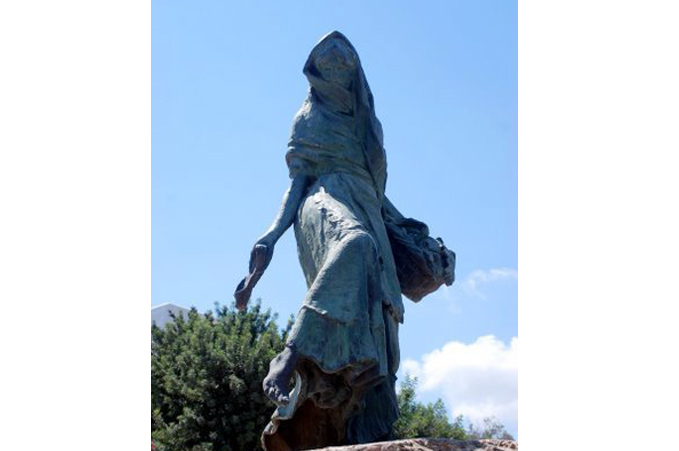
San Pascual Baylon hermitage:
Located in the Agua Enmedio area, near the hamlet Sopalmo, it was built in the 20th century thanks to the money sent by Pascual Artero: he was a mojaquero who emigrated to the island of Guam and he became birrey. It is now used by the Anglican Church.
